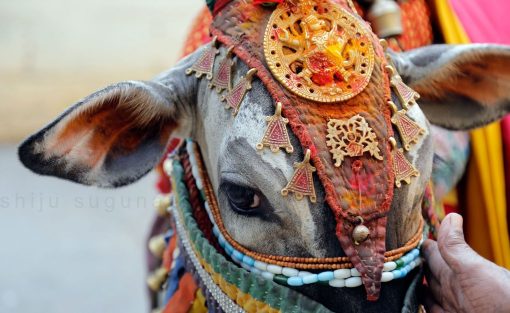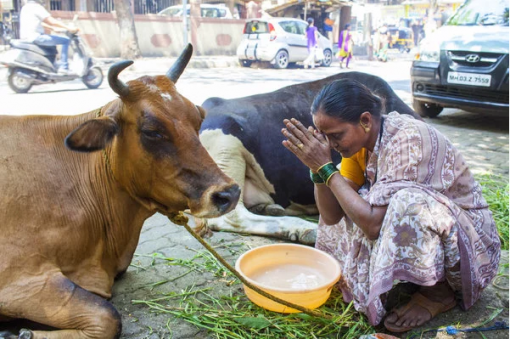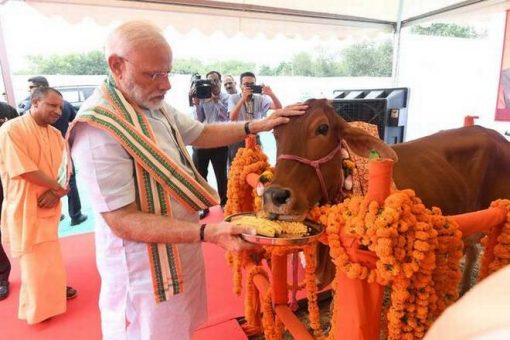
Why choose the title of a 1963 American comedy to headline this month’s column? At first glance, the plot of It’s a Mad, Mad, Mad, Mad World has nothing to do with what I am going to discuss. And yet, in one essential sense, it drives home my point. Just like the movie hovered around the madcap pursuit of $350,000 in stolen cash by a diverse and colorful group of eleven strangers, the 193 nations of the world today are chasing security and material success without really achieving either. International and regional systems are in a quandary and hyper-nationalism across continents is wreaking havoc with institutions that were created to build an orderly world after the Second World War.
On international security, the more the world claims it has eradicated the menace of international Islamic terror, the bigger that challenge becomes. This past October the United States (US) security forces killed the dreaded ISIS chief Abu Bakr al-Baghdadi. American President Donald Trump assured everyone that the world would now be “a much safer place”. But we had received much the same American assurance just eight years ago, when the US had eliminated Osama bin Laden and dismantled Al-Qaeda. ‘Islamic State’ or ISIS, however, emerged from the ashes of Al-Qaeda almost immediately. Perhaps it is time to replace that old saying, ‘the king is dead, long live the king’: ‘terrorism is dead, long live terrorism.’
The world has learnt to treat the symptoms of terrorism but is unable to address the disease itself. The days of running with the hares and hunting with the hounds are probably gone. One does not need to delve into the intricacies of how US military-industrial interests have dictated American policy in West Asia to recognize that the invasion of Iraq was grossly unethical. On totally unfounded (if not engineered) assumptions that Saddam Hussein had amassed stockpiles of Weapons of Mass Destruction (WMD), Iraq—and in the process the entire region—was devastated beyond recognition. Fine, bin-Laden and al-Baghdadi have been eliminated, but has the world system done anything to penalise the original sinners?
At some point in the 1950s, the regional security champions considered it prudent to decentralise the job of international security in order to make it more efficacious. Western Europe pioneered the idea by establishing the European Common Market (ECM) in 1957. In due course, the ECM grew into the European Union (EU), the Euro Zone, and the Schengen Treaty. Soon, the EU contagion spread to other continents. But today these experiments are facing virtual collapse under their own weight. Take the case of India. After getting disillusioned with SAARC, it started romancing ASEAN with such policy pronouncements as ‘Look East’, ‘Act East’ and ‘Act Indo-Pacific’. But when the crunch came to sign the 16-member Regional Comprehensive Economic Partnership (RCEP) it backtracked on the grounds that it did not have enough competitiveness in specific trade items to take on challenges emanating from China, Australia, or New Zealand. Was this reality unknown all these years that one would have to reach the signing stage to back out?
This is true not only of India but almost all nations. Some time ago, I made a rough calculation of how many countries were members of how many groups. The total memberships came to roughly 400, but the world has only 192 nations. This means that many countries are members of multiple organisations. Here is a list of some: Agadir, African Union, Arab League, ASEAN, ASEAN Regional Forum, BASIC, BIMSTEC, BRICS, CACM, CC, GCC, CEFTA, CEFTA, CIS, ECOWAS, EU, EurAsEC, EFTA, G-8, G-20, IBSA, NAFTA (now defunct), RCEP, SAARC, SCO, and UNASUR.
International trading arrangements have become a grand hotchpotch. Although the World Trade organisation (WTO) determines the broad contours of global trade, there are well over 400 Regional Trade Agreements (RTA) that complicate its operations.

National leaders crisscross the globe, busily attending meetings for one or another of these organisations. They use the resultant publicity in print and electronic media back home to sidetrack people’s attention from day-to-day domestic problems. Prime Minister Narendra Modi’s frequent foreign visits also provide ample fodder to cartoonists and stand-up comics. One such stand-up quip goes: “Our multinational prime minister visited India yesterday on a seven-day official trip.”
The underlying story behind this mushrooming of regional organisations is that there is an acute desperation on the part of most nations to do something quickly to arrest the growing popular disenchantment with an existing growth model that is weighted heavily in favour of an increasingly small section of people. According to recent studies, the richest one percent of Indians own 58.4% of the country’s wealth, while the richest 10% own as much 80.7%. Given how noisy democratic politics can be, politicians across the board rely on two ways to contain these frustrations: One, they put the blame on international factors; and two, they divert people’s attention using divisive and majoritarian issues, such as religion and culture. Appealing to base human instincts to divide and rule is a well-tested political strategy. Even the developed Christian countries have not been able to fully escape the religion trap. But since their democracies typically have deeper historical roots, this problem has yet to become unmanageable.
The Islamic world, however, has become a prime victim, as is evident from the unprecedented growth of Islamic fundamentalism in a large number of Muslim countries. That it would eventually degenerate into terrorism is historical wisdom, and already the case in many places. As a result, the misdeeds of tiny groups of Islamist terrorists are making Muslims at large suffer from a sense of siege.
Today, Muslims as a community are despised across the globe; yet few care to note that the victims of Islamist terror are mostly Muslims. Strangely, however, the most callous aspect of this phenomenon are the so-called leaders of the Muslim world, particularly those who can matter the most as they are sitting on huge reserves of oil and gas, something which the international economy is critically dependent upon. Leave alone doing anything effective to stem the rot, they are indirectly promoting the phenomenon by fanning mass fundamentalism. Many of them are socially and politically oppressive and provide no space for democratic freedoms. Any free sentiment is nipped in the bud. The brutal killing of the Saudi journalist Jamal Khashoggi by the Saudi secret police is an open secret.
The latest entrant to the game of religious politics is Hindu-majority India, which has started displaying symptoms of Hindu militancy heretofore unheard of. Ever since Hindutva (political Hinduism) has been ascendant in India politics, and particularly after the Bharatiya Janata Party (BJP) came to power in 2014, Hinduism has lost its philosophical and spiritual moorings and become perverse and jingoistic. Since any jingoism has to have an enemy for binary reasons, Muslims have become their bête noire. In the beginning, Christians were also targets, but for tactical reasons the focus is now entirely on Muslims. Anti-Christian visibility is fraught with risk: America is Christian and its three-million plus prosperous Indian American community has a huge stake in maintaining good Indo-US relations.
Hindutva madness is reflected both in the BJP’s politics and in its cultural statements. Muslims constitute about 15% of India’s population, but they are increasingly becoming political non-entities. In 1980, when the BJP was launched (earlier it was Bharatiya Jana Sangh), there were 49 Muslim Members of Parliament (MPs). The two BJP MPs in that parliament were both Hindu. Today, when the party has an absolute majority in parliament with 303 seats out of 545, Muslim MPs number only 27; not one belongs to the BJP.
In Uttar Pradesh (UP), historically the hub of Muslim politics, the political face of Muslims is now pathetic. Yogi [meaning: a Hindu saint who has renounced all mundane allurements] Adityanath, [real name: Ajay Singh Bisht], known for his fire-eating anti-Muslim statements, is now the state’s chief minister. Prior to the election, criminal charges were framed against him for making inflammatory statements that had violated not only the election code of conduct but also provisions of the Indian Constitution. Upon becoming chief minister, Bisht summarily closed all those cases. The underlying political message is clear: Hindutva fanaticism trumps the law.

In the cultural realm, particularly in the way in which the cow is being venerated, and in the way Hindu mythology is being glorified beyond proportion, Hinduism, now increasingly indistinguishable from Hindutva, resembles a tribal, animistic religion. The cow is a traditionally revered animal among Hindus but of late this reverence has degenerated into a frenzy. In the process, the Indian cow (yes, not foreign cow) is having a gala time. She can jaywalk on city streets, become a traffic hazard on national highways, and rampage through standing crops. If a cow dies in a traffic accident, the driver has more to be worried about than if he had run over a human pedestrian. In the latter case, he would be taken to court; in the former, he may receive fatal mob justice right away on the street.
And so, in the digitally modern and five-trillion-dollar-economy-aspiring India, cow dung and cow urine have become the country’s new supercomputer chips. According to many BJP leaders and party supporters, an Indian cow’s excreta will cure cancer, hypertension, and diabetes. A touch of her body will control blood pressure. The latest in this litany of nonsense is that her milk contains gold, which is why it is yellowish in colour. One BJP loudmouth went overboard on TV to even claim that cow dung is as valuable as diamonds. I now wait for the day when Indian banks will start offering loans against mortgaged cow milk or excreta.
A hilarious footnote to this cow story is its anti-climax in Kashmir. By abrogating the special status accorded to the region under Article 370 of Constitution, the Indian state has legitimised beef-eating in this Muslim-majority state. Under the Jammu and Kashmir Reorganisation Act, which has bifurcated the state into two Union Territories, the Indian government has repealed 153 state laws. Among those repealed laws is the 157-year old Ranbir Penal Code’s ban on beef.
Hindutva fanaticism is playing havoc with India’s scientific temper, one of the first prime minister Pandit Nehru’s most cherished values. Today, it is trumpeted ad nauseam that primitive Hindus had plastic surgery, internet, test-tube babies, missiles, aircrafts, aerodromes, pen-drives, remote sensing, and much else! It seems that if Nobel prizes were given out during the ancient times, 90% of them would have gone to the Hindus. Even India’s education minister, Ramesh Pokhriyal, has announced that it is astrology, not science, which should be given more importance in school and university curricula.
A few years ago, the American Indologist Wendy Doniger’s book, The Hindus: An Alternative History, was attacked in the US by the Hindu right, who insisted that it defamed the followers of the faith. Her Indian publishers were forced to withdraw the book from circulation in India. Now the Hindutva hoopla has reached another realm; putting a religious stamp on two languages. Thus, Sanskrit is now the monopoly of Hindus, and Urdu is a Muslim language. Recently, the appointment of a Muslim scholar as assistant professor of Sanskrit in Banaras Hindu University (BHU), was met with vehement protests from his colleagues (and many students). As if knowledge of Sanskrit is the birth right of Hindus (read Brahmins, in most cases) alone.
But the hypocrisy of the Brahmin community is such that when the Mughals were in power, they helped Dara Shikoh translate the 52 Upanishads. During the British rule, when some Europeans developed an interest in Indology, the Sanskrit-knowing Brahmins did not mind teaching them the language. They conveniently redefined mlechchha (untouchable, which included Christians in the contemporary sense) in violation of the injunction of the Skanda Puran, which says that if a Brahmin taught Sanskrit to a mlechchha, the teacher would be excommunicated. After all, their pupils belonged to the ruling class.
The mirror image of Sanskrit is Urdu, about which the Hindu right’s central narrative is straightforward and wrong: It is an alien language identifiable only with Muslims who are outsiders. Any student of the history of Urdu language knows that it has evolved from Hindi. This thesis was authoritatively argued by Pakistani scholar Tariq Rahman in his 2011 book, From Hindi to Urdu: A Social and Political History. Besides, Urdu is designated as one of the 22 Indian languages in the Eighth Schedule of the Constitution. Yet, Panjab University, in a wisdom all of its own, recently designated Urdu a foreign language. It is possible this was done inadvertently, but given the anti-Muslim/anti-Urdu hysteria gripping North India, such accidents have greater propensity of occurrence. (Let both Hindi enthusiasts and Urdu-baiters note that the greatest Mughal emperor, Akbar, spoke Bhojpuri.)
Postscript: Against the background of the beef ban lunacy in India, which has caused several lynchings over alleged possession, consumption or trading of the meat, it is amusing that one of the best breeds of beef-producing cows in America is called ‘Brahman’. This Brahman’s origin is traced to the mid-19th century, when four Indian breeds, namely, Gujarat, Gir, Ongole (now in Pakistan), and Krishna Valley, were crossbred with American varieties. In 1924, the American Brahman Breeders Association (ABBA) was registered to promote the interests of this beef packing industry. ABBA is now headquartered in Houston, where Prime Minister Narendra Modi, the great anti-beef crusader, had his grand ‘Howdy, Modi’ extravaganza in September.




